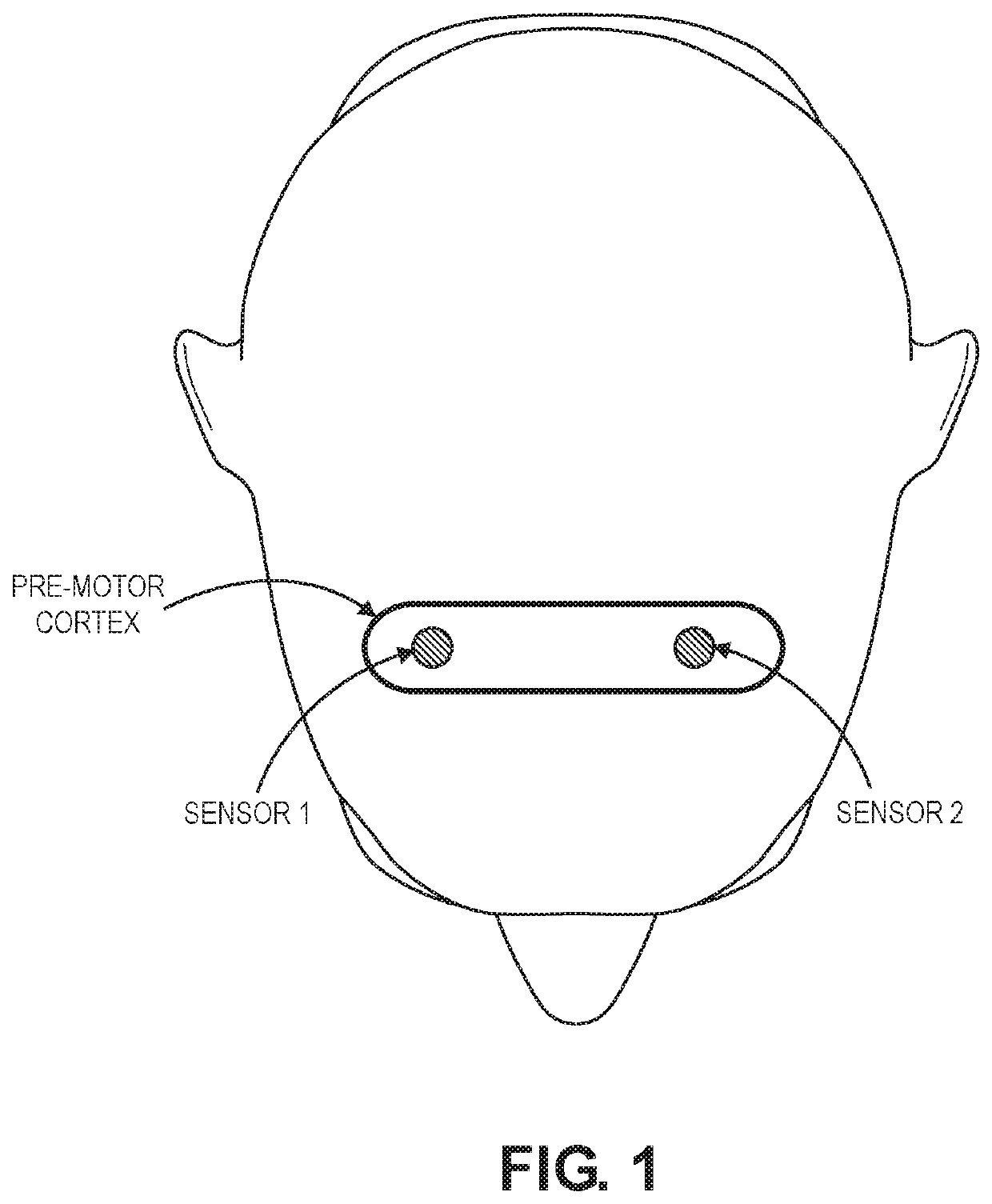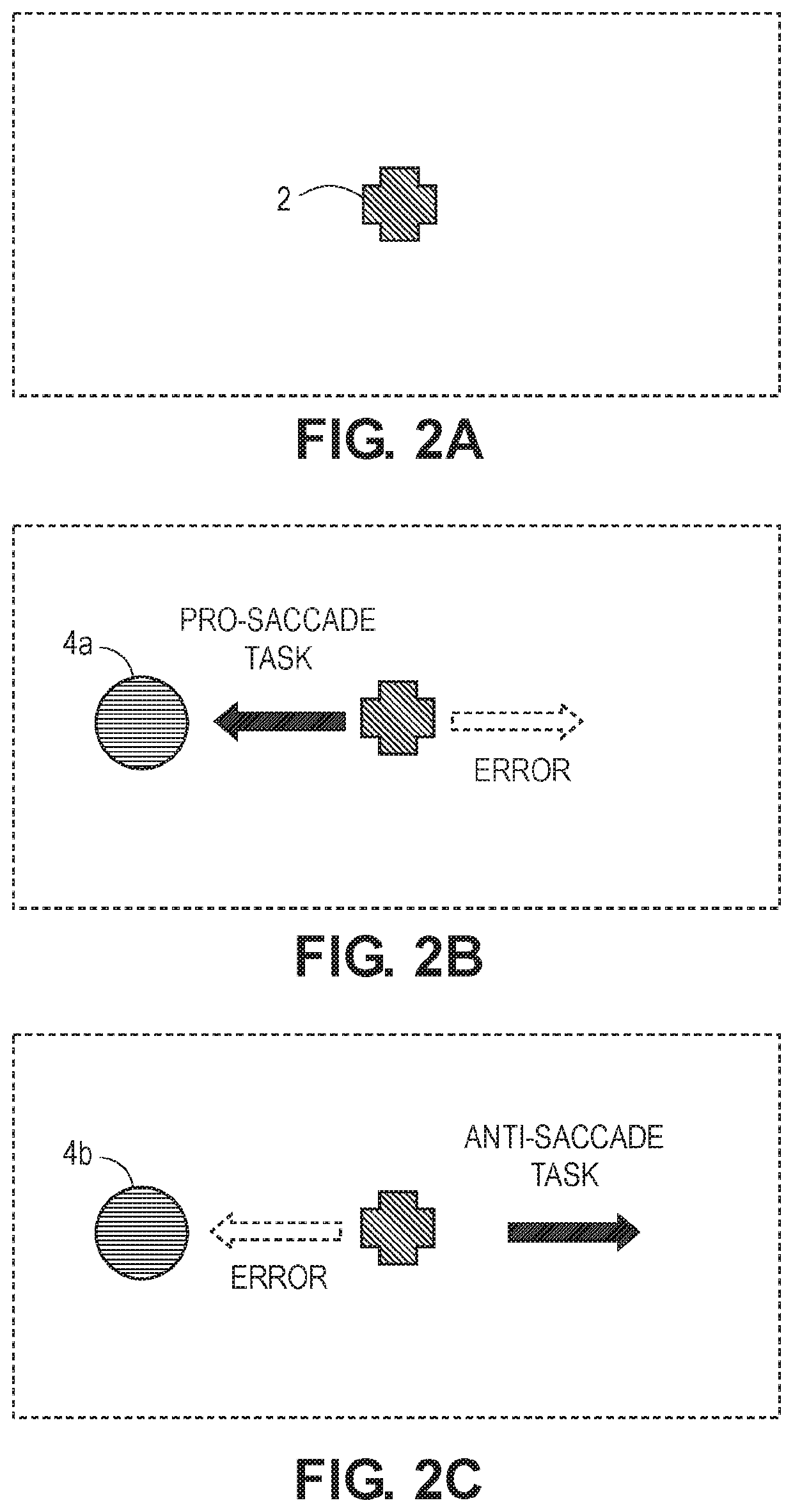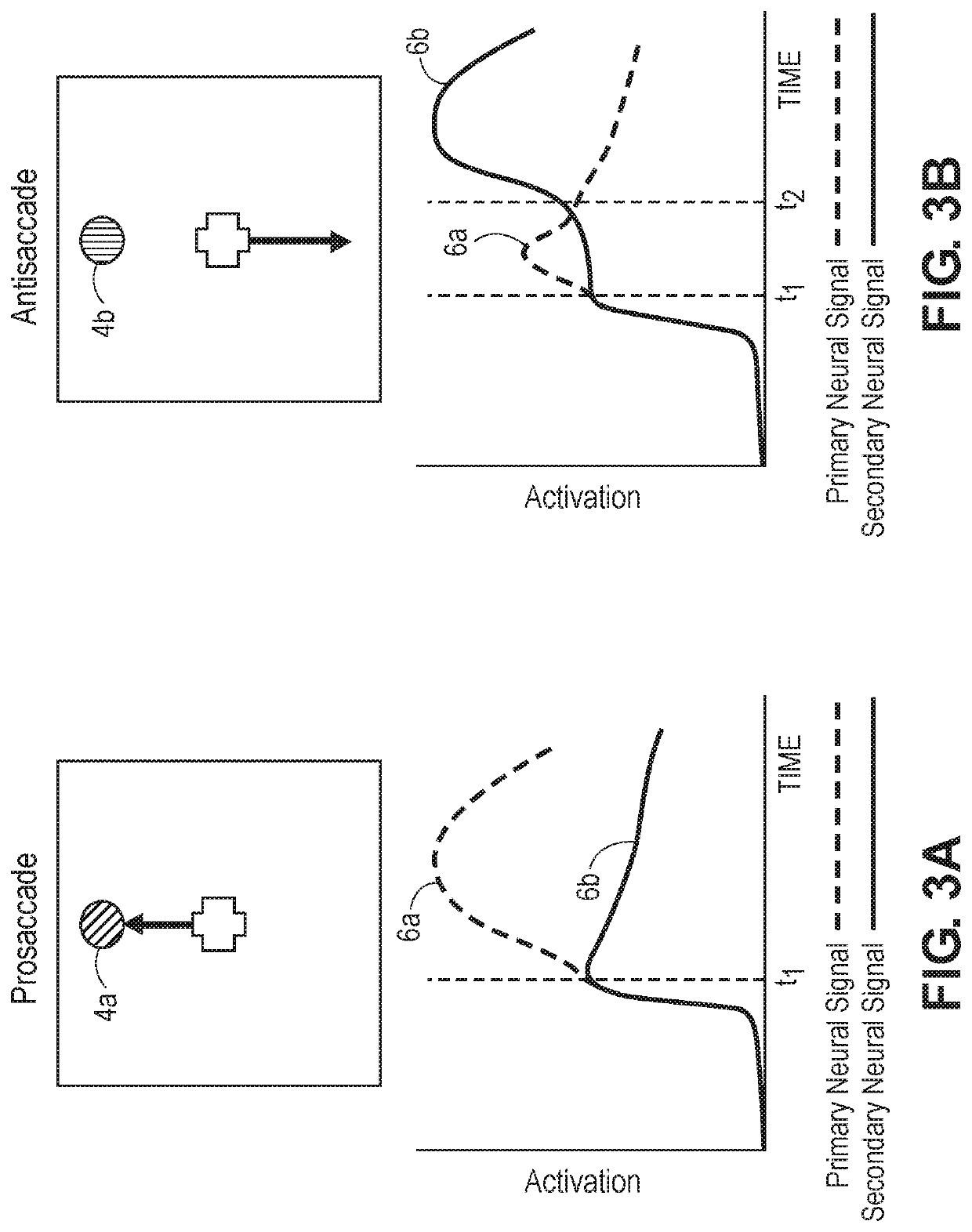Non-invasive systems and methods for detecting mental impairment
- Summary
- Abstract
- Description
- Claims
- Application Information
AI Technical Summary
Benefits of technology
Problems solved by technology
Method used
Image
Examples
Embodiment Construction
[0030]The non-invasive impairment detection system described herein is capable of determining a level of mental impairment of an individual by measuring the executive response inhibition of that individual to a stimulus. When functioning properly, the executive response inhibition rapidly cancels motor activity even after its initiation, and thus, is significantly impacted by mental impairment of that individual. In contrast to a reflexive response (e.g., patellar reflex), which involves a bottom-up mechanism in the body that does not engage the executive brain function of an individual, and thus is not significantly impacted by mental impairment of that individual, the non-invasive impairment detection system described herein focuses on an inhibitory reflex response, which involves a top-down mechanism in the body that does engage the executive brain function of the individual. As such, it is believed that measuring the inhibitory reflex response of an individual provides a good in...
PUM
 Login to View More
Login to View More Abstract
Description
Claims
Application Information
 Login to View More
Login to View More - R&D
- Intellectual Property
- Life Sciences
- Materials
- Tech Scout
- Unparalleled Data Quality
- Higher Quality Content
- 60% Fewer Hallucinations
Browse by: Latest US Patents, China's latest patents, Technical Efficacy Thesaurus, Application Domain, Technology Topic, Popular Technical Reports.
© 2025 PatSnap. All rights reserved.Legal|Privacy policy|Modern Slavery Act Transparency Statement|Sitemap|About US| Contact US: help@patsnap.com



